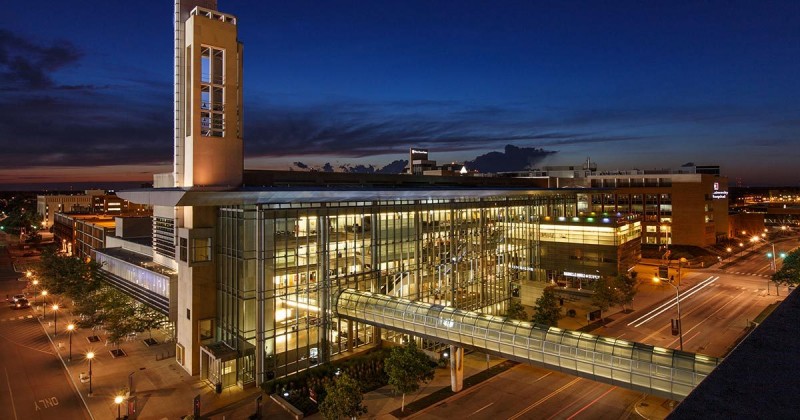
California high schools offer many facilities and features that you need to choose from. These features include academic programs, sports teams, and student body. You can also learn about the types of construction projects for high schools in California. Find out about specific construction products and companies who specialize in these projects. CMD has a list of California high schools you can search for.
School facilities
State and local governments across California are investing in school facilities. CC+S, in collaboration with the American Architectural Foundation, commissioned a report detailing the growth of K-12 school construction and renovation spending. According to the study, there were large disparities in school facilities depending on race, income of neighbors, and student demographics. Here are some reasons school facilities can be outdated or in dire need repairs. We will also discuss the drawbacks and advantages of new high school buildings.
Officials from the state and local governments aren't focusing their funding in the most critical areas, which can lead to a decrease in the availability of education funds. The study explains the policy landscape surrounding school facility funding in California and examines the funding distribution in different kinds of districts since 2006.

Academic programs
You can achieve success in your academic career by enrolling in an academic program. California high school offers many programs to help students get ready for college. Students can earn college credit through AP programs while they are still in high school. AVID, for instance, prepares middle level students for a rigorous secondary curriculum that will allow them to be eligible for four-year college. AVID is a national program, administered locally, but its success in California is attributable to the efforts of educators who have brought this program to the state. MESA is an educational program that encourages and motivates students from low-income backgrounds to excel in science and math, and to pursue a career as a scientist.
The STaRS symposium explores the role of interdisciplinary approaches to improve the health of people and communities. The program provides students with hands-on experience by completing a research project. This is especially useful for students who are interested to study medicine or science. STaRS' summer program gives high-school students the opportunity to learn basic science skills and do basic research. STaRS internships present their work to the STaRS symposium as well as basic research.
Sports teams
One-quarter of all high school athletes play on football teams. This is a substantial drop in participation for a sport that attracts large numbers. California high schools continue producing top-tier recruits, despite the decrease in participation. The decline in football participation could be due to national trends. CALmatters performed a recent analysis of data from California's Interscholastic Federation and the National Federation of State High School Associations. California's overall tackle football participation rate has fallen by around 5 percent over the past decade.
The Central Coast Section is made up of more than 100 high school students and spans five counties, from Daly City to King City. Catholic and Christian high schools participate in the leagues. They compete in football, basketball, track and field, and both Catholic and Christian high school. California's history of high school athletics dates back to at least the late nineteenth century. In 1895, San Jose High School played Santa Cruz High School in Santa Cruz in a football game. The former won six points. Before the advent of the 21st century, St. Ignatius and Sacred Heart Cathedral met on the gridiron.

Student body
These data are based upon government statistics. The data are only applicable to high schools managed by state operating agencies. Although there is only one high school in a district, overall enrollments are higher than average. The 2020-2021 academic year is used for this data, while the data from previous years has been presented in a different format. Below is the breakdown of student population in each state's high-schools.
California's public high-school enrollment numbers were recently released. Although the graduation rate for high school has slightly increased over last year, it is still below the level before the pandemic. Overall, the graduation rate for California's public high schools has increased by more than one percentage point in the last five years. The 62% enrollment of minorities is higher than the 78% state average.
FAQ
Should I choose to specialize in a single subject or branch out into other areas?
Many students opt to specialize in one area (e.g. English History, Math) and not branch into many other subjects. It's not necessary to be a specialist. For instance, if your goal is to become a doctor you can choose to focus in either surgery or inner medicine. Or, you could choose to become a general practitioner specializing in pediatrics, family practice, gerontology, psychiatry, or neurology. If you're interested in a career as a business professional, you can focus on management, finance or operations research. It's your choice.
How long does it usually take to become a early childhood teacher?
The bachelor's degree program in early childhood education takes four years. Two years are required to take general education courses offered by most universities.
After completing your undergraduate studies, you will usually enroll in graduate school. This step allows you to specialize in a particular area of study.
For example you could focus on child psychology, or learning disabilities. You must apply for a teacher preparation program after you have completed your master's degree.
This process will take another few years. This is a time when you will learn real-world skills from experienced educators.
Finally, to be able to officially start working as a teacher, you will need pass the state exams.
This process can take several years. You won't be immediately able to jump into the workforce right away.
What does it take to be a teacher early childhood?
You must first decide if you want to pursue a career in early childhood education. First, you need to obtain your bachelor's. Some states require that students earn a master’s degree.
You'll likely have to take classes during the summer. These courses cover topics such as pedagogy (the art of teaching) and curriculum development.
Many colleges offer associate degrees that can lead to teaching certificates.
Some schools offer certificates, while others offer bachelor's and master's degrees. However, some schools only offer diplomas.
There may not be any need for additional training if your goal is to teach from home.
How much does homeschooling cost?
Homeschooling comes with no fees. Some families charge between $0-$20 per lesson. Other families offer no-cost services.
However, homeschooling does require dedication and commitment. Parents must make time for their children.
They need to have access books, supplies, or other learning materials. To supplement their education, homeschoolers may need to use community programs and events.
Parents need to consider costs such as transportation, tutoring, and extracurricular activities.
In addition, homeschoolers must plan ahead for field trips, vacations, and special occasions.
To become an early-childhood educator, do you need to go to college?
No, but you might want to consider going to college to prepare yourself for a future career in the field.
It is essential to understand that becoming a teacher takes hard work. Each year there are many applicants that are not accepted into programs. Many students also quit college after only one semester.
To become a teacher, you must also meet certain qualifications.
What are some ways to get scholarships?
To help pay college expenses, scholarships are grants. There are many types available in scholarships. These are:
-
Federal Grants
-
State Grants
-
Student Loans
-
Work Study Programs
-
Financial Aid
Federal grants come directly to the U.S. Federal grants are subject to certain conditions. To demonstrate financial need, applicants must meet certain requirements.
State grants are offered by individual states. These grants are not always based on financial need. Some states may offer them for specific reasons.
Banks and other lending agencies can provide student loans. Students usually borrow money to cover tuition and living costs.
Work-study programs are designed to encourage employers to hire qualified students. Employers must pay at least the minimum wage to their employees.
Financial aid is available to help low-income families pay for college. It covers all or most of the tuition costs.
Statistics
- Globally, in 2008, around 89% of children aged six to twelve were enrolled in primary education, and this proportion was rising. (en.wikipedia.org)
- These institutions can vary according to different contexts.[83] (en.wikipedia.org)
- Data from the Department of Education reveal that, among 2008 college graduates, 92.8 percent of humanities majors have voted at least once since finishing school. (bostonreview.net)
- Think of the rhetorical power of nineteenth-century abolitionist Harriet Beecher Stowe, Martin Luther King, Jr., or Occupy Wall Street activists with their rallying cry of “we are the 99 percent.” (bostonreview.net)
- They are also 25% more likely to graduate from high school and have higher math and reading scores, with fewer behavioral problems,” according to research at the University of Tennessee. (habitatbroward.org)
External Links
How To
Where can you find a teacher job?
Teachers are available in public elementary schools and private elementary schools.
You must complete a bachelor's program at one of these institutions before you can become a teacher:
-
A four-year college/university
-
Associate's degree program
-
There are some two-year community colleges programs
-
Combinations of these three types programs
To be eligible to become certified for teaching positions, applicants need to meet the state's requirements. These requirements include passing standardized tests, and completing a probationary phase of work experience.
Most states require candidates to pass a test called the Praxis II. This test measures the candidate's knowledge of reading, writing, mathematics, and language arts.
Many states also require that applicants obtain a specialized licensure before being certified as teachers.
These licenses are issued annually by the state boards of education.
Some states grant licenses with no additional testing. To determine if your state has granted licenses without additional testing, you should contact the board in your state.
Some states will not issue licenses to applicants who have not completed a master's program.
Others allow students to apply directly for licensure to the state board.
The price, duration, and coursework required for licenses can vary greatly.
One example is that some states only require high school diplomas, while others require bachelor's degrees.
Some states have specific requirements for training, such a literacy or child-development course.
Some states require that candidates receive a master's degree before becoming licensed.
Many states ask teachers who are applying for certification about their employment history.
It is possible to mention other professions in your application.
However, almost all states will accept work experience from any type of previous job.
Perhaps you would like to include your past job title, post, and years in service.
This information is often helpful to potential employers.
It shows them that your skills and experiences are relevant.
While working, you may have learned new skills and acquired valuable work experience.
You can showcase this to future employers by putting your resume in their hands.